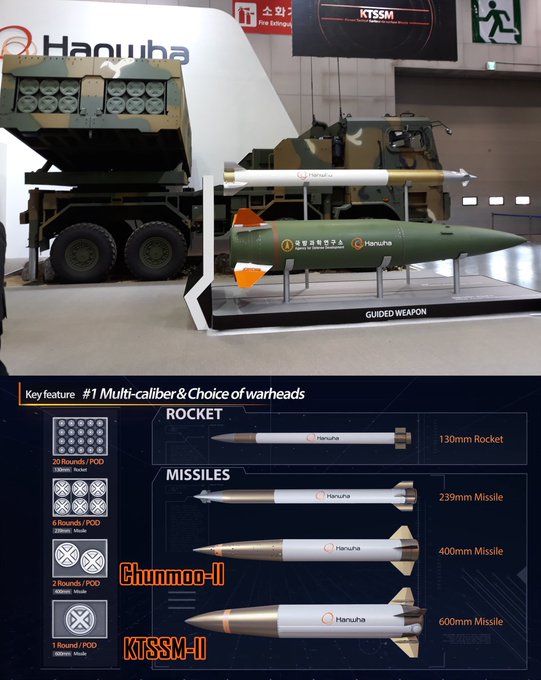Old Codger
Active member
Would have liked to see a range of over 200kms to be able to hit Pyongyang.
With a bit of luck......
OC
With a bit of luck......
OC
This post is better suited for the ROK Army Artillery thread IMO: https://defencehub.live/threads/artillery-programs.757/page-2
South Korea is now develop three more missiles for Chumoo MLRS.
1. Ramjet 239mm missile.
2. 300mm missile(400mm cancelled).
3. KTSSM-II Block-III. Ramjet 239mm missile will have three times longer range(200km+) than the normal 239mm. 300mm(Chunmoo-II) missile is slightly small version of the 400mm missile which is cancelled. It can be contained in the one missile pod in 4 rounds(400mm is 2 rounds). KTSSM-II Block-III's informations are unknown, KTSSM-II Block-II performance is just under the Hyunmoo-2A ballistic missile. Block-II will use Hyunmoo-2 chassis.
Since the introduction of guided artillery rockets/missiles it‘s all about long-range and precision.A quick question:
The whole idea of artillery rockets is to provide cheap multiple deployable artillery rounds in rocket form.
Doesn’t introducing a Ramjet propulsion in to such systems make it rather expensive whilst defeating the very object of cheap rounds?
As a reference : rampage 300mm guided artillery rocket launched from air is estimated at a few hundred thousand dollars.
A ramjet missile would be few million dollars.




